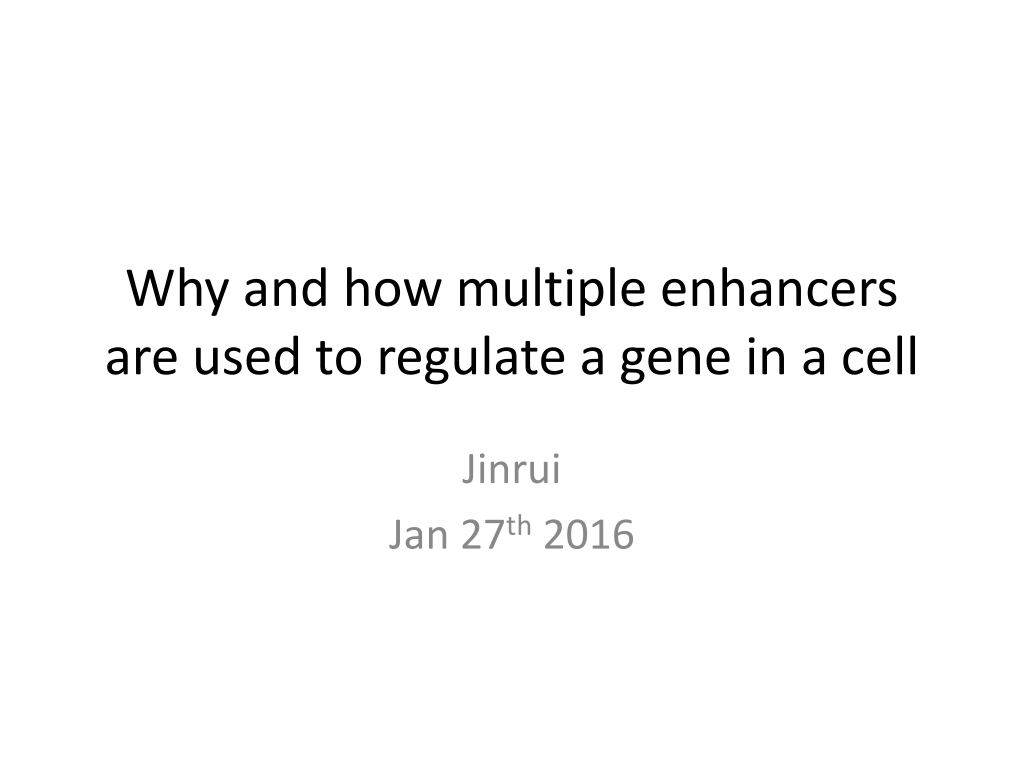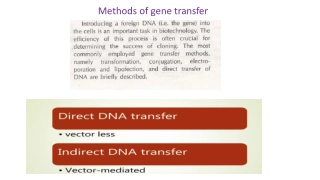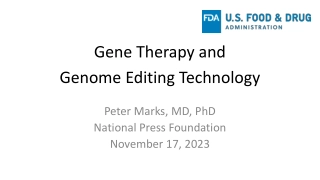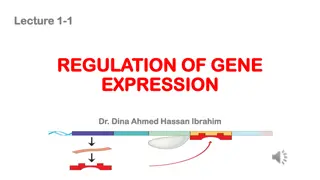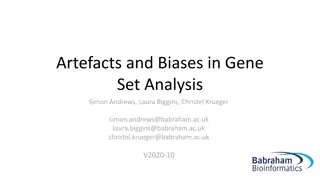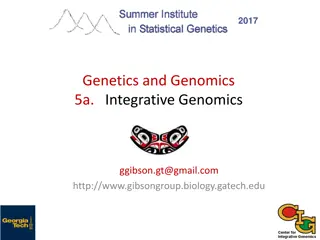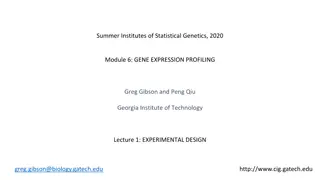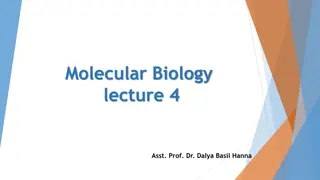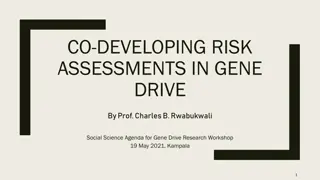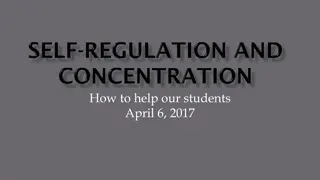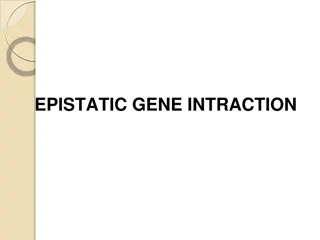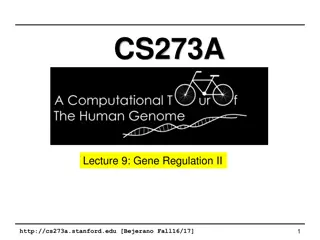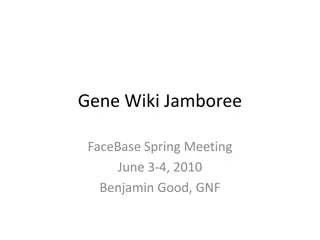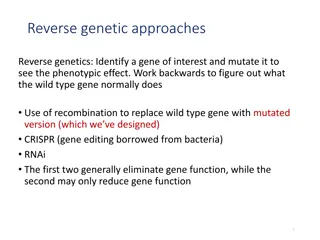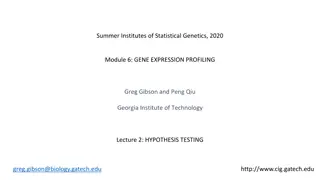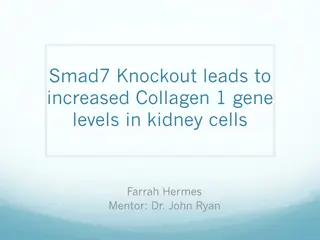Role of Multiple Enhancers in Gene Regulation
Multiple enhancers play a crucial role in regulating gene expression in a cell, with approximately 3-5 enhancers associated per human gene. These enhancers are essential for tissue-specific expressions and are active within the same cell line. The use of multiple enhancers can impact gene expression levels, reduce expression noise, and serve other complex regulatory functions. Experimental studies have been conducted to explore the impact of enhancer combinations on gene regulation, shedding light on the intricate mechanisms involved. Utilizing various techniques such as Hi-Cap, RNA-seq data analysis, and single-cell RNA sequencing, researchers have uncovered the significance of enhancer-promoter linkages and enhancer activities across different tissues and cell lines in model organisms like mice.
Download Presentation

Please find below an Image/Link to download the presentation.
The content on the website is provided AS IS for your information and personal use only. It may not be sold, licensed, or shared on other websites without obtaining consent from the author.If you encounter any issues during the download, it is possible that the publisher has removed the file from their server.
You are allowed to download the files provided on this website for personal or commercial use, subject to the condition that they are used lawfully. All files are the property of their respective owners.
The content on the website is provided AS IS for your information and personal use only. It may not be sold, licensed, or shared on other websites without obtaining consent from the author.
E N D
Presentation Transcript
Why and how multiple enhancers are used to regulate a gene in a cell Jinrui Jan 27th2016
Abundance of enhancers in mammalian genome e.g. ~3-5 enhancers per human gene Multiple enhancers of a gene are for tissue specific expressions
Multiple enhancers of a gene are active in same cell line Increase gene expression level? Reduce expression noise? Other complicated regulatory roles?
Experimental study Exp12 Scheme Jacques P Bothma et al elife 2015
Experimental study Exp12 Scheme Exp1 Jacques P Bothma et al elife 2015
Experimental study Exp12 Scheme Exp1 Exp2 Jacques P Bothma et al elife 2015
Experimental study Exp12 Scheme Exp1 Exp2 On three genes Knirps: Exp12 >= Exp1 + Exp2 Jacques P Bothma et al elife 2015
Experimental study Exp12 Scheme Exp1 Exp2 On three genes Knirps: Exp12 >= Exp1 + Exp2 Hunchback: Exp12<= Exp1 + Exp2, but > Exp1, Exp2 Jacques P Bothma et al elife 2015
Experimental study Exp12 Scheme Exp1 Exp2 On three genes Knirps: Exp12 >= Exp1 + Exp2 Hunchback: Exp12<= Exp1 + Exp2, but > Exp1, Exp2 Snail: Exp12 < Exp2 Jacques P Bothma et al elife 2015
Main materials and data Mouse embryonic stem cell (mESC) Hi-Cap to identify enhancer-promoter linkage RNA-seq data (for testing expression level) Single cell RNA-seq data (for testing expression noise) Enhancer activities (by CAGE) across ~400 tissues and cell lines in mouse
Why multiple enhancers are used to regulate a gene Gene with more enhancers has higher expression
Is the expression level increase due to promoter? with stronger promoters?
To test this, The Hi-Cap data in mESC => enhancer-gene linkages CAGE data of mouse => an enhancer is active or not in each of the ~400 tissues and cell lines
To test this, The Hi-Cap data in mESC => enhancer-gene linkages CAGE data of mouse => an enhancer is active or not in each of the ~400 tissues and cell lines Results: when a gene has a larger number of active enhancers in, e.g. cell A than in cell B, it has higher expression in cell A.
Is this comparison result because highly expression genes are more likely to interact with random sequences (false positive enhancers)? with more false discovers as enhancers?
Expression level and # of enhancers are positively correlated (spearman s rho)
Gene using multiple enhancers has low expression noise CV: std/mean, calculated using single cell RNA-seq data (Use only genes with average transcripts > 50) Kim et al. 2013
Gene using multiple enhancers has large Fano factor (FF) FF = Variance/mean. Large FF indicates the expression is highly regulated (deviate from Poisson exp model)
How multiple enhancers regulate gene expression Modeling gene expression How enhancers change Kon and/or Koff, and lead to the previously observed expression patterns Munsky et al. 2012
Single-cell RNA-seq data are used to estimate kon and koff Use only genes with average transcripts > 50 i.e. 5173 genes Discard 585 genes with negative kon, koff or kr Consequently, 4688 genes for further analysis Kim et al. 2013; Pecoud 2003
Gene with more enhancers has fast-off promoter (larger koff)
Explanation I Assumptions Natural selection requires Kon Koff >= a Enhancer increases Kon, usually neutral or beneficial Mutation at promoter tends to increases Koff, thus is usually purged out by selection
Explanation I Process Event1: gain of a new enhancer causes Kon-Koff >> a Event2: a mutation appears increasing Koff, but due to Event1, still Kon-Koff >=a. Event3: the mutation is not deleterious, thus is likely to be accepted Consequently, population Koff increases
Explanation I Predictions # of enhancers increases => Kon increases => Koff increases Conditional on Kon, # of enhancer and Koff have no correlation Conditional of Koff, # of enhancer and Koff still have a positive correlation, although expected to be weak
Explanation I Predictions # of enhancers increases => Kon increases => Koff increases Conditional on Kon, # of enhancer and Koff have no correlation Spearman s rho 0.017, p = 0.55 Conditional of Koff, # of enhancer and Koff still have a positive correlation, although expected to be weak Spearman s rho 0.067, p = 0.022
Another possible explanation Some identified enhancers are chimeras. Some repressors are identified as enhancers To test this, identify enactive bindings Histone modification eRNA TF binding (sites)
Future work Filter out false discovered enhancers Redo the analyses Propose popgen model to address (1) Necessity of adding enhancer (2) Advantage of adding enhancer over duplicating gene Enrichment analysis of GO functions
